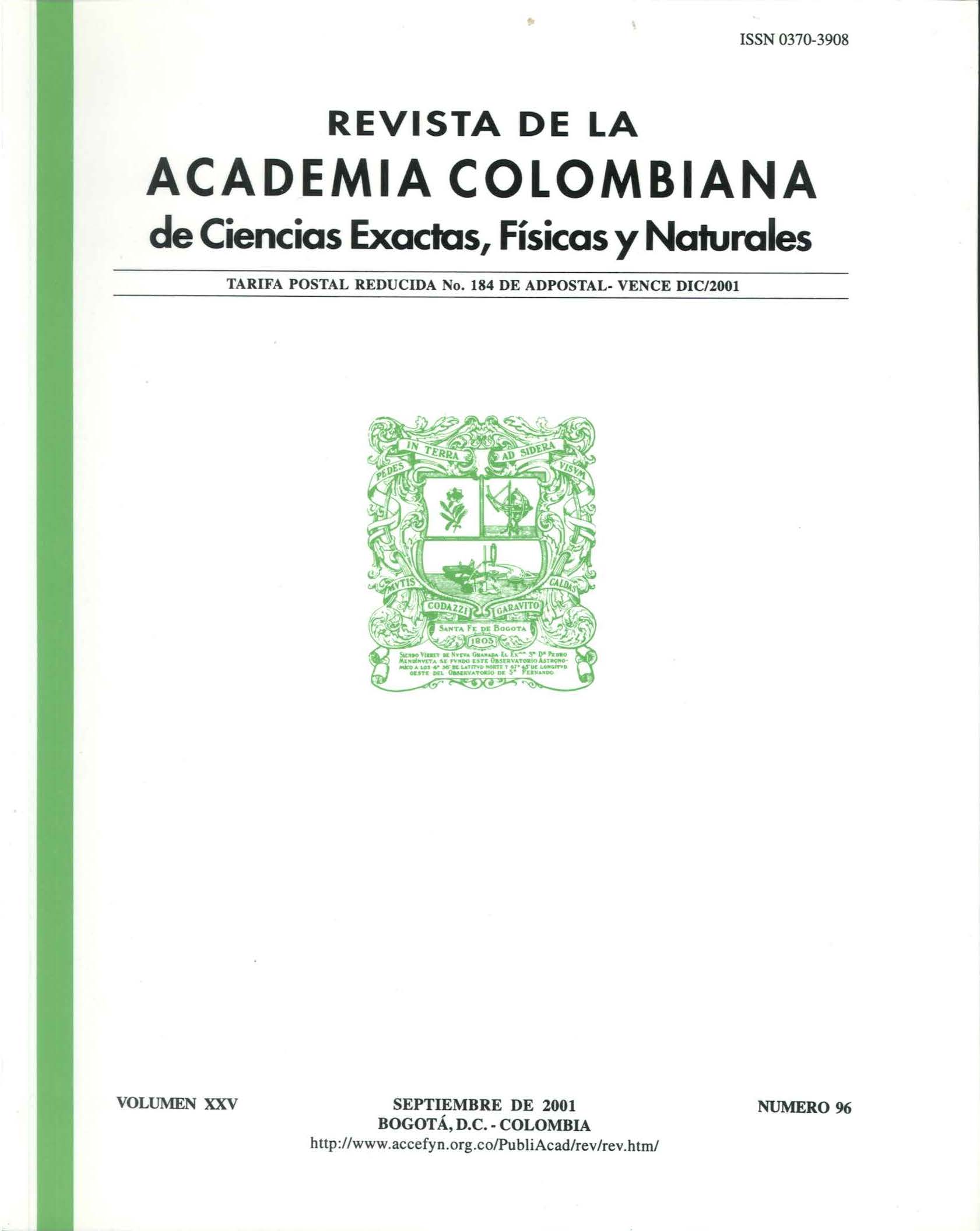Resumen
Se evaluó el comportamiento de una magnesita colombiana en la obtención de un material de espinela, comparando propiedades físicas y composición de fases por DRX, con la obtenida a partir de óxido de magnesio puro. La espinela es útil en la formulación de refractarios básicos, utilizados en la industria del acero y cemento (Henry, 1997), como material abrasivo, como sustrato en circuitos eléctricos, como membranas cerámicas y actualmente en odontología (Pasquier, 1991). La espinela se produce por la reacción entre la magnesia y la alúmina a temperaturas superiores a 1100ºC. Con base en los diagramas de fase se diseñaron dos formulaciones. Los reactantes se llevaron a un tamaño de partícula menor a 10 mm, se conformaron y sinterizaron a 1650ºC. Se encontró que el exceso de magnesia y el contenido de sílice en la materia prima natural favorecieron la sinterización.
Referencias
Bailey, J., Russell, R. 1968. "Sintered spinel ceramics". Ceramic Bulletin. 47 (11): 1025-1029.
Fyfe, W.S. 1964. "Geochemistry of Solids". 1st ed. McGraw-Hill Book Company. New York.
Handwerker, C., Blendell, J. 1988. "Ceramic Transactions. Sintering of Advanced Ceramics". National Institute of Standards and Technology. Westerville, Ohio. 13.
Henry, W., Stendera, J. 1997. "Producing basic refractories for steel applications". Ceramic Industry, February: 29-32.
Mojica, A. 1997. "Estudio de la potencialidad refractaria de algunas magnesitas nacionales". (Tesis de Grado) Universidad Nacional de Colombia. 117 p. Bogotá.
Morrell, R. 1985. "Handbook of Properties & Engineering Ceramics. Part 1. An introduction for the engineer and designer". National Physical Laboratory. New York.
Pasquier, J., Komarneni, R., Roy, R. 1991. "Synthesis of MgAl2O4 spinel: seeding effects on formation temperature". Journal of Materials Science, 26, 3797-3802.
Pena, P. 1998. Diagrama elaborado por Pilar Pena y enviado por correo. Instituto de Cerámica y Vidrio. CSIC. Madrid - España.
Prasad, T., Radovanovich, S. 1982. "Studies on sintering of some natural magnesites and crystal growth of periclase at high temperature". Trans. Ind. Ceram. Soc. 21(2): 37-48.
Wang, J., Zhang, L., Ren, X., Zhu, X., Gao, P. 1992. "Compositions of alumina-magnesia spinel synthesized from natural raw materials". Interceram, 41 (1).
West, A. 1985. "Solid State Chemistry and its Applications". 1st ed. John Wiley & Sons Ltd. New York.
Zografou, C., Reynen, P., Mallinckrodt, D. 1983. "Nonstoichiometry and sintering of MgO and MgAlpO4". Interceram. (2): 40-42.

Esta obra está bajo una licencia internacional Creative Commons Atribución-NoComercial-SinDerivadas 4.0.

